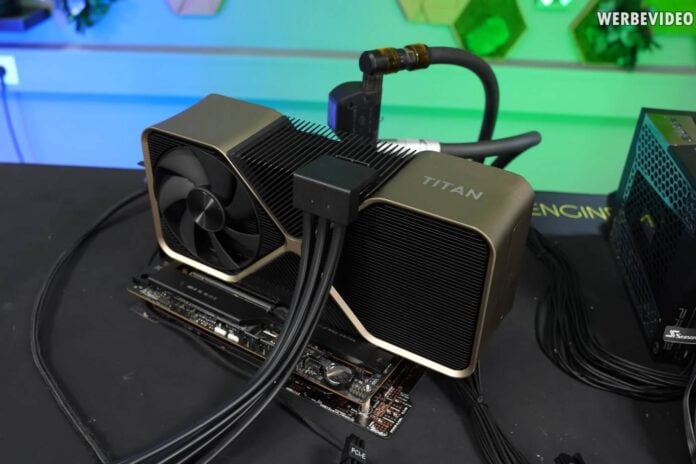YouTuber der8auer has shared a look at one of Nvidia’s unreleased prototypes, showcasing an unusual power adapter. Unlike the rest of the RTX 40 Series, this never-released GeForce RTX Titan Ada graphics card featured two 12VHPWR headers, giving it access to a theoretical 1,200W of power. To keep it compatible with old non-ATX 3.0 PSUs, the card also ships with a one-of-a-kind dual-12VHPWR to six 8-pin cable adapter. Yowzers.
The card itself has an AD102 GPU – the same powering the RTX 4090 – but with a complete implementation of 18,432 active CUDA cores instead of the 16,384 on RTX 4090. The card also features double the memory capacity at 48GB of GDDR6X.
As you might assume, the full-fat GPU allowed RTX Titan Ada to deliver a noticeable performance jump. During tests, the card was 22% faster than the RTX 4090 in Cyberpunk 2077 at 4K, while consuming just 17% more power. Despite all the extra ammunition, the latest-generation RTX 5090 still leaves this monstrosity in the dust, offering about 26% higher average fps.

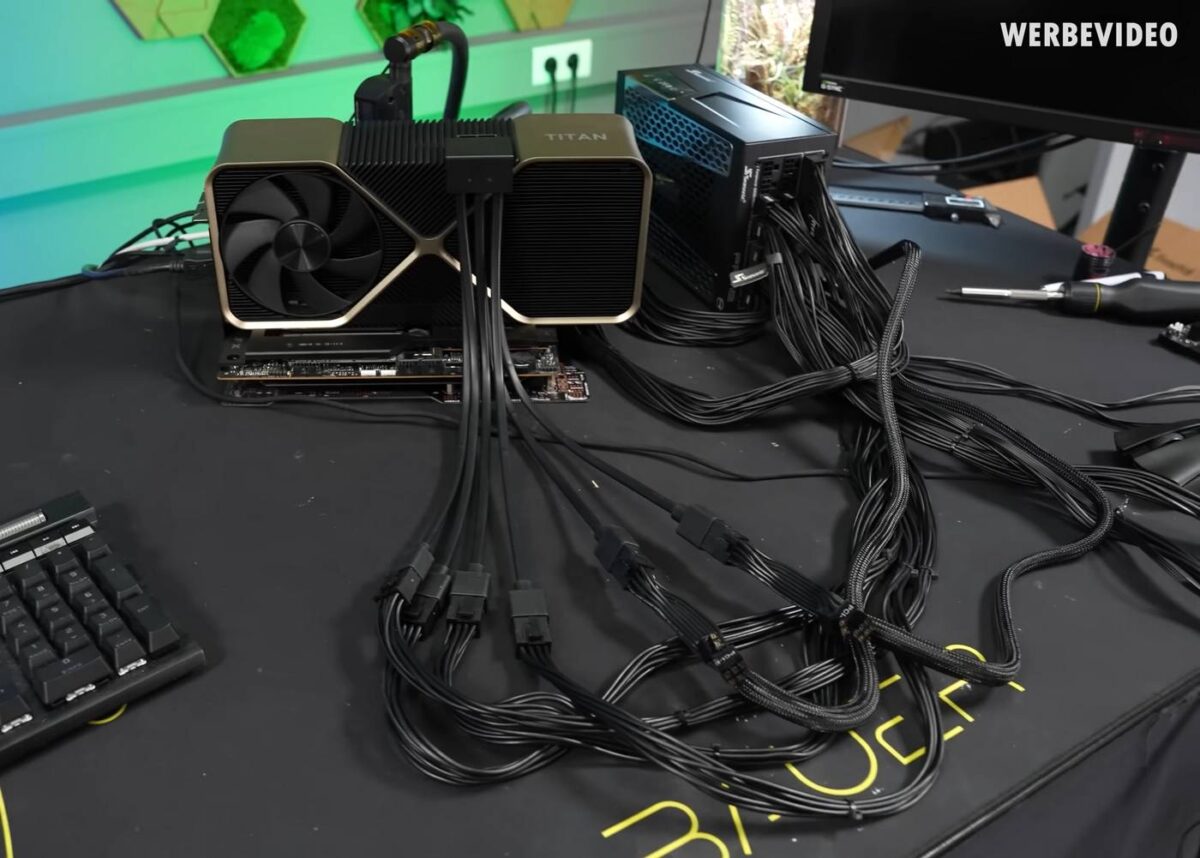
Nevertheless, Nvidia seemingly planned for this Ada generation prototype to take much more power and thus potentially boost to lofty heights. Titan Ada to date the only GeForce we know of to feature dual 12VHPWR headers, and its reappearance is helping rekindle rumours of a 50 Series Titan.
Nvidia was expecting the prototype to surpass the 600W limit of a single port, which goes in accordance with previous rumours that suggested a greedy 900W power consumption. Knowing the dual-12VHPWR configuration is workable, it makes me crave to see a 50 Series variant. RTX 5090 currently features only 170 of 192 SMs, operating at 575W. Lifting that ceiling would allow for a full implementation of 24,576 cores, up from 21,760 as we know it today. That’s a card I’d love to see.
Interesting to note that instead of the usual 12VHPWR to four 8-pin, Nvidia decided to go with a dual 12VHPWR to six 8-pin. Considering the 8-pin’s 150W rating, this adapter should be able to supply 900W to the card. This cable prototype also shows how Nvidia switched from rigid to flexible cables with its final product, which are more user-friendly.
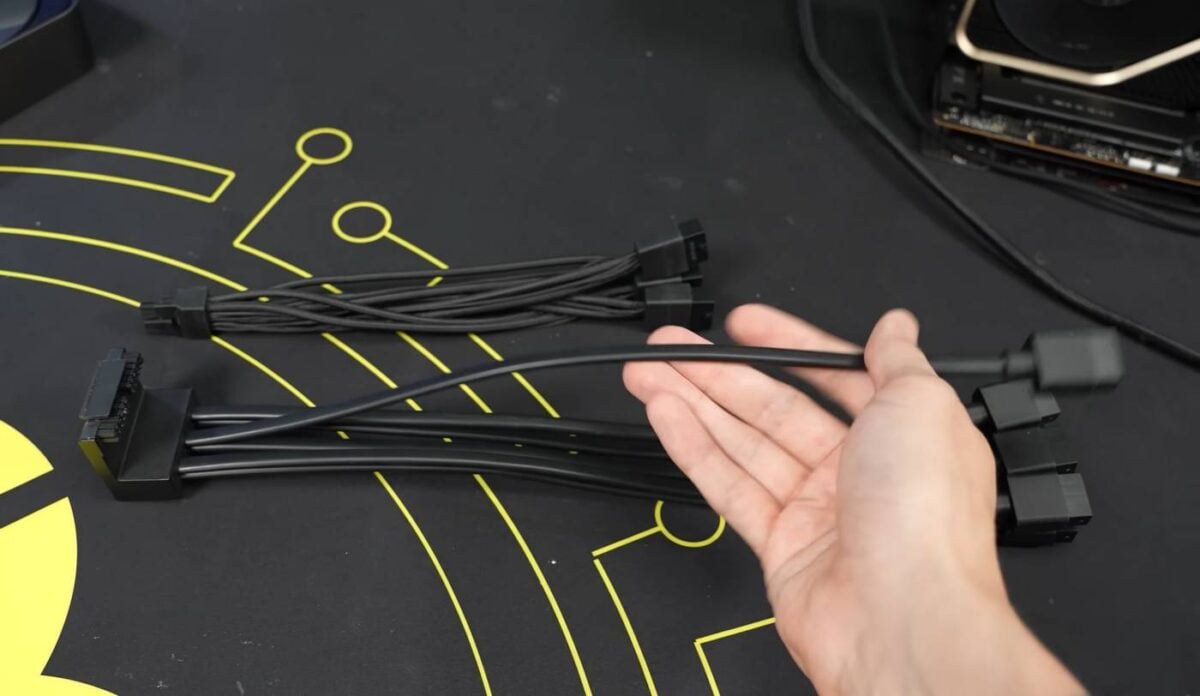
der8auer has also tested the adapter/card reaction to improper cable plugging and found that the prototype didn’t react to disconnected cables. When removing four of the six 8-pin PSU cables, the card remained functional. While this would be a concern due to the high per-cable load, we must keep in mind that this isn’t a final product, and thus it may lack some security features. Opening the adapter showed a well-built PCB using a purpose-made design, indicating an advanced prototyping step.
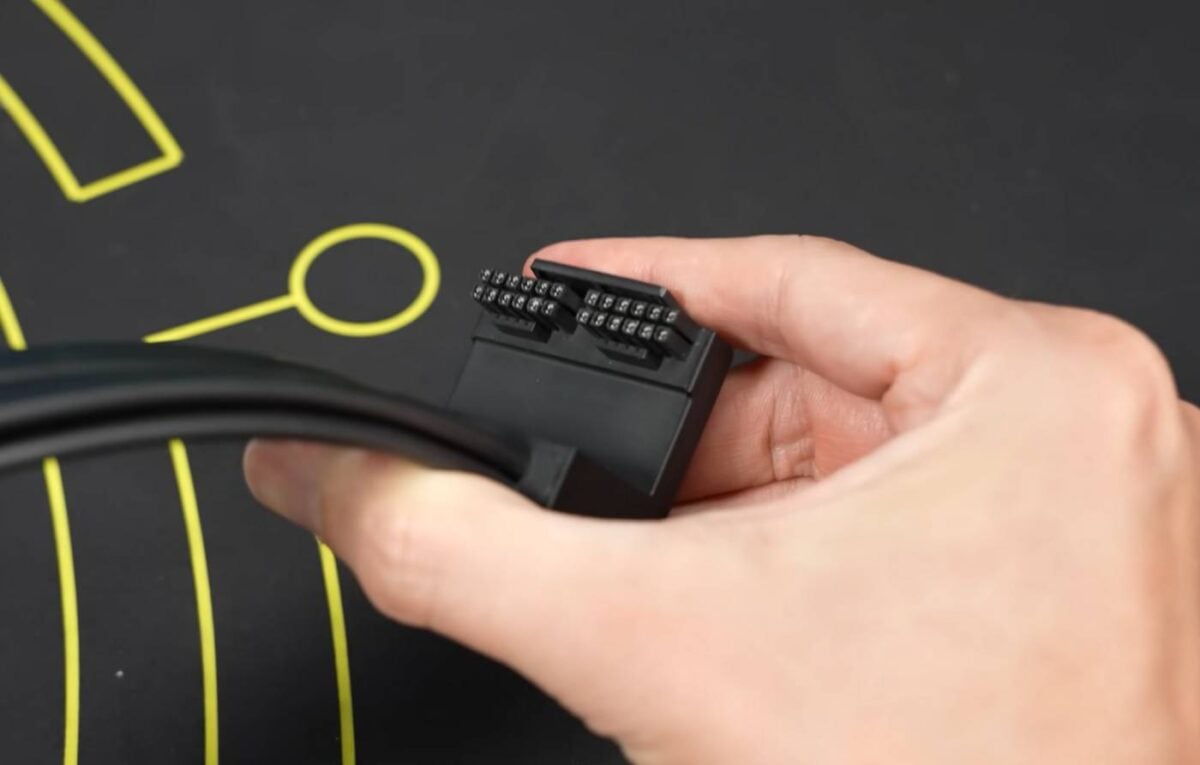
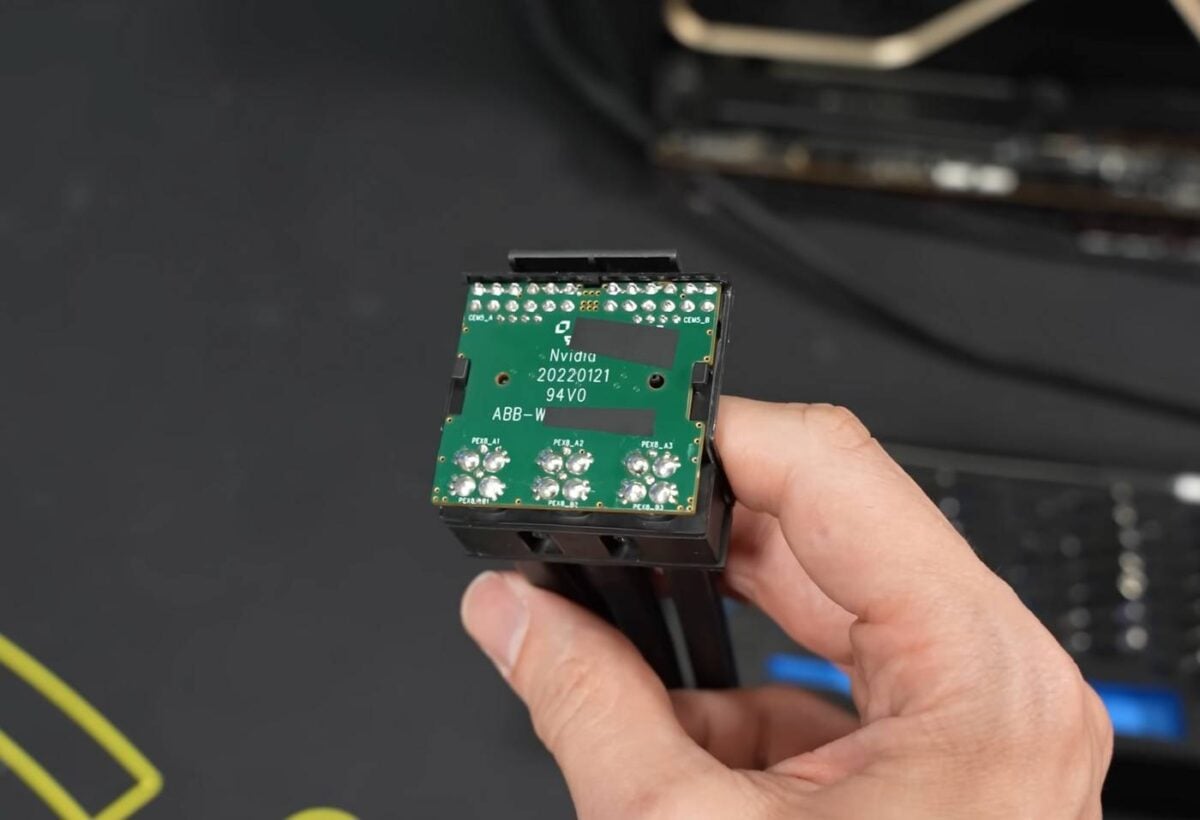
It’s unfortunate that we never got to see and test this card. The performance, design, and power characteristics were fascinating even in its prototype state, so a final product would have been enthralling for the enthusiast market. Nvidia evidently never felt the need, owing to its supremacy at the top of the consumer graphics market.
That dominance at the high-end hasn’t changed, yet while RTX 5090 rules the roost, the enthusiast in me can’t help but dream of a 50 Series Titan with two 12VHPWR connectors and a replete 192-SM GB202 GPU. I dread to imagine how much such a card would cost, but boy would it be fun to benchmark.

